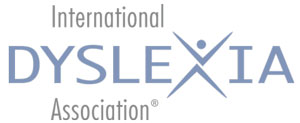Geschwind Memorial Lecturer
By Nancy Cushen White
IDA is delighted to welcome Fumiko Hoeft, M.D., Ph.D. to our upcoming conference in San Diego where she will give the Norman Geschwind Memorial Lecture on November 14. Her presentation, “An integrative Approach to Dyslexia Research: Translating Practice to Research and Back to Practice,” is in the tradition of great Geschwind lectures of the past—a discussion at the intersection of research and practice. However, Dr. Hoeft’s path from her home in Japan to prestigious Geschwind lecturer is decidedly untraditional. We caught up with her recently to talk about how it all came to be. (Also, see the recent HealthDay article republished in U.S News & World Report, which included quotes from Dr. Hoeft.)
Q: As a medical doctor, what motivated you to return to graduate school to earn a Ph.D. in neurophysiology?
A: At the beginning, I wanted only to be a clinician, so I chose a medical school in Japan that was considered among the best for clinical work—but not necessarily for research. During my medical training, I realized that clinical practice was not as evidence-based as I had initially envisioned it to be. There were many unanswered questions. So, after three years of practicing medicine as an M.D., I decided to try research, which meant returning to do my graduate work at Harvard and eventually obtaining my Ph.D. from Keio University in Japan.
My Ph.D. was in neurophysiology, a subtype of neuroscience/medical research. I was interested in understanding how magnetic fields applied to the skull could non-invasively induce electrical current in a complex organ, the human brain, and how this could induce therapeutic effects, for example, in people with depression (a technique known as transcranial magnetic stimulation, or TMS). Yes, very different from the research I do now!
I began my study of cognitive neuroscience and neuroimaging as a postdoc, considerably later than most people getting into research. During a 3-year period when I was required to “wait”* to apply for my Ph.D., I was hired at the California Institute of Technology (Computational Neural Systems) to set up a TMS lab. There I became fascinated by how information becomes integrated within the human brain (specifically auditory and visual information processing). Researchers at Caltech were excited about basic science, which equally excited me at first, but I missed the more “applied/practical” side of research—the reason I became a physician and researcher. At the same time, I was fascinated by functional MRI and wanted to integrate it into my research. I am forever indebted to my postdoc mentor, John Gabrieli, Ph.D., (then at Stanford-Psychology; now at MIT-Cognitive Science) for introducing me to dyslexia and reading research. He helped me make the connection between my research on auditory-visual integration and dyslexia—beginning my research in this field. Coming from Japan, I had not even heard of the word dyslexia. It never showed up in my medical school textbook or in my training!
*Although I finished all my research in the first two years at Harvard, I was required to attend graduate school for 5 years before I could apply for my Ph.D. (through my medical school in Japan).
Q: How did you become interested in neuro-imaging?
A: During my Ph.D. work in physiology, I became fascinated by the fact that we can use neuroimaging to examine not only physiological responses but also the anatomical structure of the brain quantitatively and non-invasively to understand cognition. At the same time, I was fascinated by the idea that we might be able to use these basic science technologies to help find clinical markers for early identification of disorders and response to intervention. This became the basis of my thesis, and my fascination and excitement for neuroimaging technology continues to this day.
Q: What attracted you to your more recent focus on the “internal environment” (i.e., resilience, self-esteem, grit, and motivation)?
A: As many researchers are, I was first more interested in understanding the neural-mechanisms underlying reading acquisition and dyslexia. As I talked with families from our research program, I learned that while parents were interested in ways to improve their children’s reading they also were devastated to see their children’s self-esteem and confidence drop as a result of their struggles with reading. Some parents even made the decision to home-school their children with dyslexia so they would not have to experience feelings of failure.
Jessica Black, Ph.D., an educational psychologist interested in neuroscience, was studying with me as a postdoc. Her interest in self-concept and resilience raised my awareness of the topic and I became interested more from the research side. She is now an assistant professor at Boston College, and we still collaborate on the topic that we call “internal environment.”
When I hear similar stories, I am sad when thinking about the families I spoke with back then and now. I am probably projecting some of my own personal experience. When I moved to an English speaking country, everything was a challenge. Even math, my favorite subject, suddenly felt difficult—although you would think that math should not be influenced by whether you can read the English instructions. It still takes me longer than other people to read, understand, and write in English.
Q: What impact do you expect will result from studying the interaction between the neurobiology of learning and its disorders (e.g., dyslexia), the internal environment (i.e., socio-emotional health), and the external environment (i.e., instruction, interventions, accommodations)?
A: My hope is that studying the interaction of all of these areas will lead to finding optimal and integrated ways to intervene and prevent the negative consequences of reading challenges that children with dyslexia currently face.
General comment:
With the hope of improving children’s lives, my goal is to integrate the fields of Education, Neuroscience, and Psychology in ways that mutually benefit and mutually inform all three fields—and, as a result, strengthen all of them. I am shocked to see how little information related to school-related conditions (e.g., dyslexia) is included in the training of child psychiatrists. I also am surprised at how little training teachers receive about the workings of the human brain—when that is the very organ that teachers “interact” with and “sculpt” to maximize learning and success in the children they teach every day.
Fumiko Hoeft, M.D., Ph.D. is Associate Professor of Child & Adolescent Psychiatry and Director for the Laboratory of Educational Neuroscience (LENS) at the University of California-San Francisco (UCSF), and Research Scientist at Haskins Laboratories. BrainLENS is interested in learning how cognitive science can inform educational and clinical practices, with specific interests in understanding the neurobiological cause of dyslexia, early identification and prediction, and the emotional resilience necessary to succeed.
Copyright © 2014 International Dyslexia Association (IDA). We encourage sharing of Examiner articles. If portions are cited, please make appropriate reference. Articles may not be reprinted for the purpose of resale. Permission to republish this article is available from info@interdys.org.
Share this with your friends and family…

